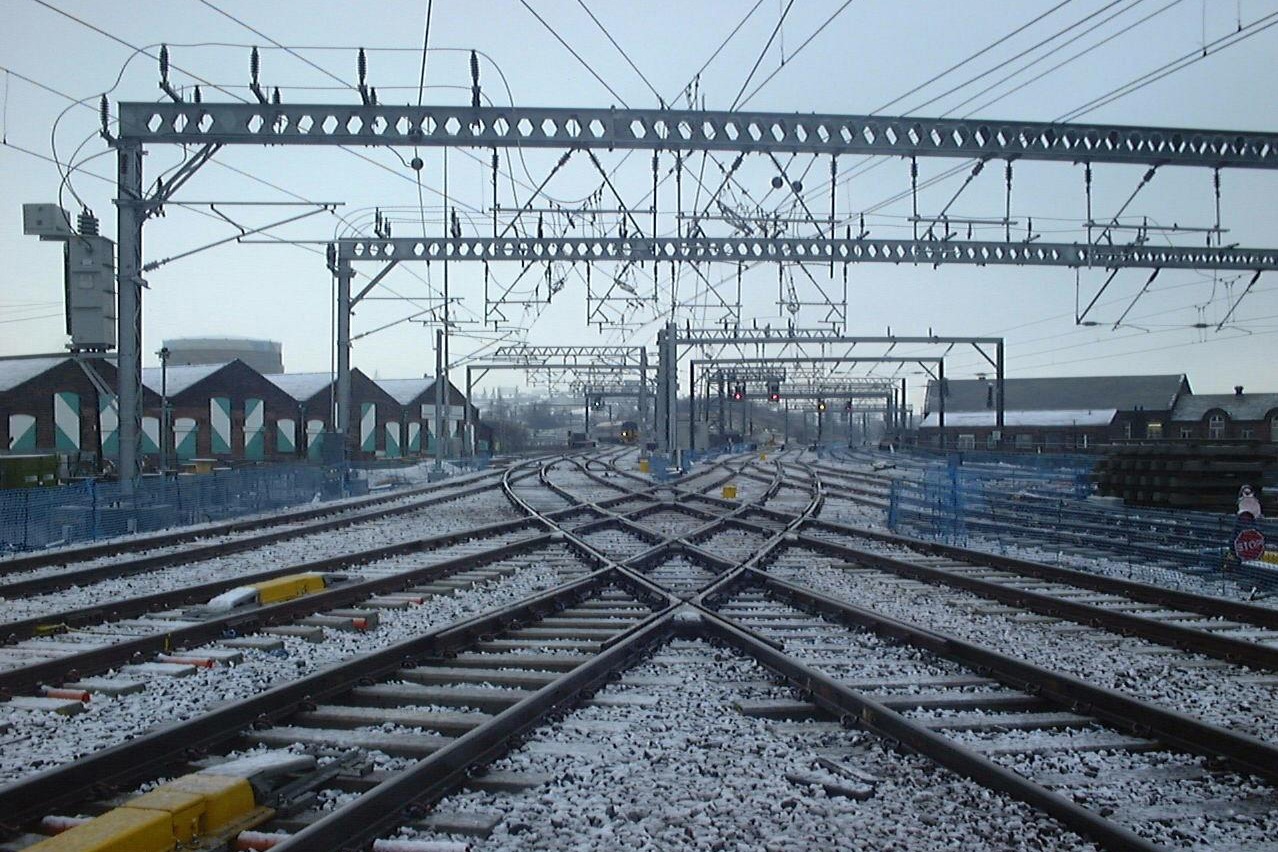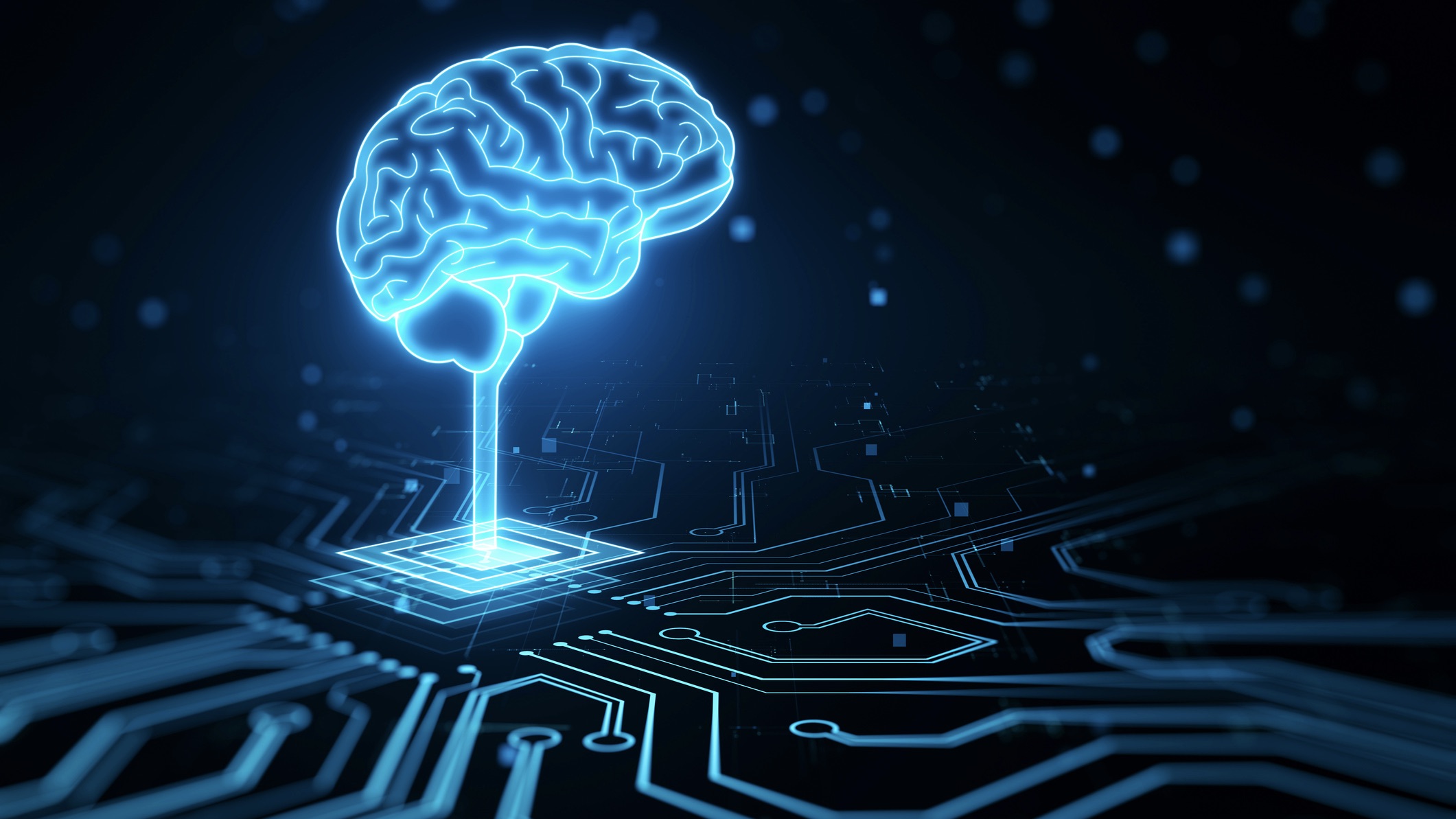The future of AI-enabled railways
From safety to efficiency, here are just some of the ways that AI is improving the future of railway travel


Most people would struggle to name a technology that has saved even a few deer from being run over by a train, but in the UK one train operator has managed to save 6,000 – thanks to Artificial Intelligence (AI).
The project, which is being run jointly by Network Rail and London North Eastern Railway along a one-mile stretch track near Peterborough, is an example of object detection, which is one of the key uses of AI in railways.
It consists of 127 camera sensors, 90 alarms – which include audible and ultrasonic noises as well as flashing red and white lights – and 10 WiFi routers. AI-powered sound and vision sensors detect deer movements and the sound is analyzed to see if it’s moving towards the tracks. If it is, the sound, ultrasound, and light onslaught begins in the hope the deer will be persuaded to go back the other way.
Object detection can also be used in rather less ostentatious ways. For example, it could take photo, video, or 3D point cloud data from cameras on trains or remote-control drones and use it to detect issues remotely. In the words of Rail magazine, this enables a “boots off the ground” approach as crews don’t have to go and manually examine rail infrastructure in person. This makes repair and maintenance efforts more targeted, saving time, and also is safer for railway workers.
“Areas of application include vegetation encroachment, where features can be automatically identified via 3D GIS, overhead line or structure maintenance points, or any obstruction or potential obstruction to the line,” Rail magazine said.
All aboard
Passenger management is another area where AI is improving rail journeys. In May 2024, train operator Northern rolled out automatic passenger counting (APC) AI software to measure the number of people on its eight Class 769 trains, which run between Liverpool, Manchester, Southport, Wigan, and Blackpool.
The software is over 98% accurate at calculating how many passengers are on a service, according to the train operator.
Get the ITPro daily newsletter
Sign up today and you will receive a free copy of our Future Focus 2025 report - the leading guidance on AI, cybersecurity and other IT challenges as per 700+ senior executives
In a statement, Jack Commandeur, engineering director at Northern, said: “More than 90m people step on-board one of our trains every year and our fleet of Class 769 trains will now give us more accurate data on passenger volumes than we’ve ever had before.”
Commandeur added that the project will help “improve the overall efficiency of our operations and can inform future planning”.
The data will be made available on information screens “very soon”, which will help passengers find the emptiest carriage to board according to Bolton News.
Seeing double
AI can also be used to create digital twins of trains and tracks. The reasons for creating these virtual replicas of infrastructure and rolling stock are many and varied, from forecasting when maintenance work will need to be done to planning future builds.
For example, in Italy digital twins have been used in the creation of a high-speed rail link between Rome, Reggio Calabria in the south of the country, and Sicily.
The goals of this project were:
- to make the rail system more accessible by providing new interconnections
- to design environmentally and economically sustainable infrastructure
- to meet European targets for emission reduction
- and to reduce the journey time between the three locations to four hours or less
The cloud-based digital twin allows people from many different disciplines to work together simultaneously, according to a Global Railway Review interview with a representative from Italferr, the organization overseeing the project.
“Many different data, in various formats, can be visualized in the digital twin,” the Italferr spokesperson told Global Railway Review. “Thanks to the integration with the common data environment, the digital twin was consistently updated and synchronized with what was already available in [engineering project collaboration software] ProjectWise.”
“Another crucial aspect is the continuous flow of information. In fact, the iTwin platform developed in this project can be used in the detailed design phase and in the future applications, such as maintenance and asset management,” they added.
Network Rail, the UK’s national rail infrastructure operator, has also adopted AI for predictive maintenance. The firm uses a cloud-based application called Insight, into which data from measurement trains, track images and remote condition monitoring is fed. The software then, in its own words, “create(s) one ‘big picture’ of the railway”.
“Insight uses this data alongside artificial intelligence to predict and warn our maintenance teams when a fault is likely to happen. This warning can be given 28 days, 90 days or even a year before the fault is expected to occur,” the company added.
Towards an AI-enabled future
In March 2024, consultancy McKinsey produced a report called The journey toward AI-enabled railway companies in partnership with the International Union of Railways. It looks at how analytical and generative AI are being used in the rail industry and opportunities for further adoption.
Adoption currently is fairly low level, according to the report with “only a few railway companies and OEMs implementing multiple use cases at scale”. It estimates that greater adoption could release “$13 billion to $22 billion in impact a year, globally”.
The report identifies 20 areas where AI could be used to support business activities. These include areas already discussed like rolling stock and network maintenance, as well as customer services and passenger information. It also brings in perhaps less obvious areas for AI application too, such as crew training, HR, rail safety, and onboard operations and services.
“Overall, various AI technologies can support railway companies to better invest, build, plan, and deliver efficient operations and meet passenger needs. To illustrate, for a €5 billion rail company, AI could deliver around €700 million a year in value,” McKinsey said in an article about the research.
For the railway industry, the opportunities to incorporate AI into operations are vast with everyone from passengers to maintenance workers benefiting.
While it can be daunting to start off with - and there needs to be the stomach for considerable investment - there’s no time like the present to look at how all elements of AI could get the industry on track to a better future.

Jane McCallion is Managing Editor of ITPro and ChannelPro, specializing in data centers, enterprise IT infrastructure, and cybersecurity. Before becoming Managing Editor, she held the role of Deputy Editor and, prior to that, Features Editor, managing a pool of freelance and internal writers, while continuing to specialize in enterprise IT infrastructure, and business strategy.
Prior to joining ITPro, Jane was a freelance business journalist writing as both Jane McCallion and Jane Bordenave for titles such as European CEO, World Finance, and Business Excellence Magazine.
-
 Bigger salaries, more burnout: Is the CISO role in crisis?
Bigger salaries, more burnout: Is the CISO role in crisis?In-depth CISOs are more stressed than ever before – but why is this and what can be done?
By Kate O'Flaherty Published
-
 Cheap cyber crime kits can be bought on the dark web for less than $25
Cheap cyber crime kits can be bought on the dark web for less than $25News Research from NordVPN shows phishing kits are now widely available on the dark web and via messaging apps like Telegram, and are often selling for less than $25.
By Emma Woollacott Published
-
 6G: Pioneering a new era of innovation and business value
6G: Pioneering a new era of innovation and business valueSponsored Content Discover how 6G will redefine the wireless industry through innovation, AI integration, and groundbreaking technology to drive new business value
By Rene Millman Published
-
 Huawei at Gitex Global 2024: driving innovation in industrial digitalization and intelligent transformation
Huawei at Gitex Global 2024: driving innovation in industrial digitalization and intelligent transformationSponsored Content Huawei showcased its latest advancements at Gitex Global 2024, focusing on accelerating digital transformation through innovative product launches, partnerships, and AI-ready ICT infrastructure
By ITPro Published
-
 Huawei Cloud: enabling business and industry growth
Huawei Cloud: enabling business and industry growthSponsored Content Huawei Cloud is transforming industries with innovative cloud, AI, and digital solutions, empowering enterprises to achieve growth and success in the digital age
By ITPro Published
-
 Amplifying intelligence: Huawei’s smart solutions for manufacturing and large enterprises
Amplifying intelligence: Huawei’s smart solutions for manufacturing and large enterprisesSponsored Content As industries face mounting pressures to innovate, Huawei is launching ten new intelligent solutions, designed to transform manufacturing, retail, and real estate through cutting-edge ICT represented by AI and cloud technologies
By ITPro Published
-
 What’s the role of AI in large enterprises?
What’s the role of AI in large enterprises?Supported Content From customer experience to software development, AI is becoming increasingly essential to efficiency in larger companies
By George Fitzmaurice Published
-
 How factories are transforming their operations with AI
How factories are transforming their operations with AISupported Content Advanced technologies are becoming more accessible as manufacturers strive for lights-out factories and greater operational efficiency
By Keumars Afifi-Sabet Published
-
 How the oil and gas industry is using AI to maximize production
How the oil and gas industry is using AI to maximize productionSupported Content Artificial Intelligence is revolutionizing the oil and gas industry by enhancing operational efficiency, reducing costs, and improving safety, as companies leverage cutting-edge technology to optimize exploration and production processes
By Rene Millman Published
-
 How is AI improving healthcare?
How is AI improving healthcare?Supported Content From disease imaging technology to administrative tools, AI is playing an important role in aiding a strained industry
By George Fitzmaurice Last updated